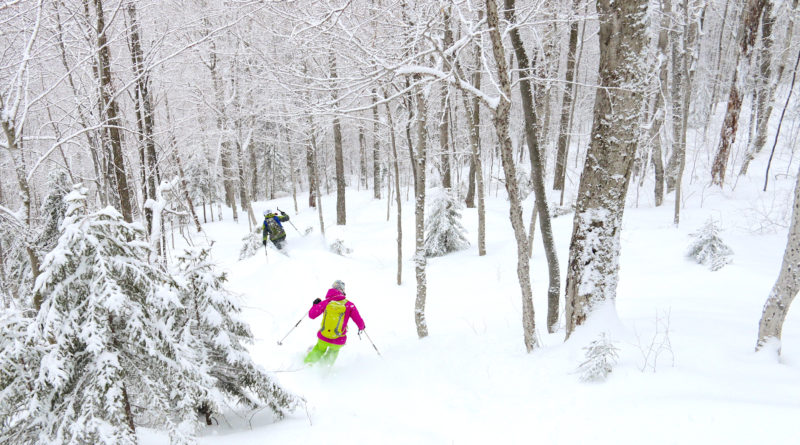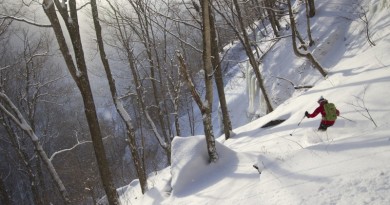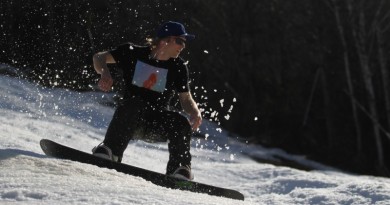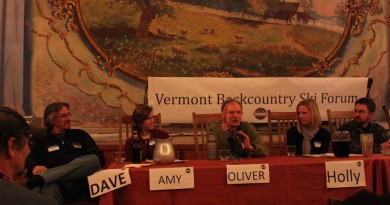The Backcountry Payoff
With new chapters, huts and guided tours, backcountry skiing and riding just get bigger this season.
On a January day last winter, the parking lots were full—both of them—and cars were lined up and down the road. The guy parked next to me, with Massachusetts plates, said “I drive here pretty much every weekend, ski all day and then head home.” He put his skins on and disappeared up the Long Trail toward Goshen Mountain and the backcountry powder runs of Brandon Gap.
According to a new study by the SE Group, he was one of the 3,268 people who skied or rode the unmaintained, unpatrolled glades there between January 5 and April 4, 2018.
Three years ago, you’d be hard pressed to find maybe two or three skin tracks leading off of Route 53, which runs east to west from Rochester to Brandon. That was before a small group of backcountry skiers from the Rochester Randolph Area Sports Trail Alliance (a.k.a. RASTA) persuaded the Green Mountain National Forest to allow sanctioned glading, making this the first (official) backcountry ski zone on National Forest land.
Since then, RASTA has created maps and put up signage in four separate ski zones, serving 15,000 feet of vertical. The group will be offering guided tours of Brandon Gap on February 9 and of its less-developed Braintree trail system, near Randolph, on February 16. This year, both areas will have huts.
“Because of insurance reasons, the cabin at Braintree remains an unheated shelter for day use only,” says RASTA’s co-founder Zac Freeman. In the Brandon Gap area though, the cabin is quite the opposite. On September 28, 2018, the Vermont Huts Association installed its first backcountry hut just east of the Gap, at Chittenden Brook Campground. The hut, designed by the Yestermorrow School in Warren, sleeps 10 in bunks. It has solar power and is heated with a propane stove. The kitchen is fully stocked with pots and pans and a propane stovetop. And it can be booked for $110 to $175 a night.
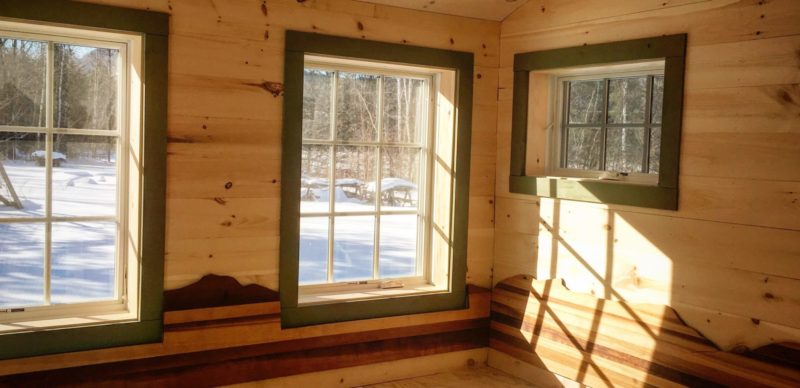
“It’s already almost fully booked for the season,” says Vermont Huts founder, R.J. Thompson. In the past year, Thompson has named five new and prospective Vermont Huts backcountry hut locations, ranging from the huts of Merck Forest, near Dorset in southwestern Vermont, to a new hut on the Nulhegan River in the far northeast corner of the state. This spring, he hopes to rebuild the South Pond cabin in the Green Mountain National Forest in Chittenden, Vt., which burned last January in what Vermont State Police believe was an act of arson. “We’re also looking for a location between Stowe and Waterbury for a hut,” he says. “And we’d love to put one near the Catamount Trail.”
The Catamount Trail Association not only serves as the umbrella group for backcountry skiing in the state but also hosts guided tours of sections of the 200-mile-long backcountry ski trail that runs the length of Vermont. Around the state, other backcountry groups, many affiliates of the CTA, are mushrooming.
At the annual Vermont Backcountry forum in Rochester on Nov. 2, the Northeast Backcountry Alliance showed a film featuring locals getting steep and deep in gladed terrain that’s being developed in the Willoughby State Forest. On Dec. 7, the Mad River Valley Backcountry Coalition, a newly-formed chapter of the Catamount Trail Association, had a kick-off party at Mad River Glen. The group hopes to develop new trails as part of the Camel’s Hump State Forest management plan. In southern Vermont, the Dutch Hill Alliance of Backcountry Skiers and Hikers (DASH) has turned the old Dutch Hill Ski Area, which closed in 1985, into an 87-acre backcountry ski zone.
The SE Group’s impact study showed that between Feb. 19 and March 30, 2018 more than 670 people used the Dutch Hill trails, generating $391,000 in area sales and supporting the equivalent of six jobs. A similar study at Brandon Gap showed that the 3,268 skiers or riders who were there between January and April generated an estimated $2.1 million in sales for the region.
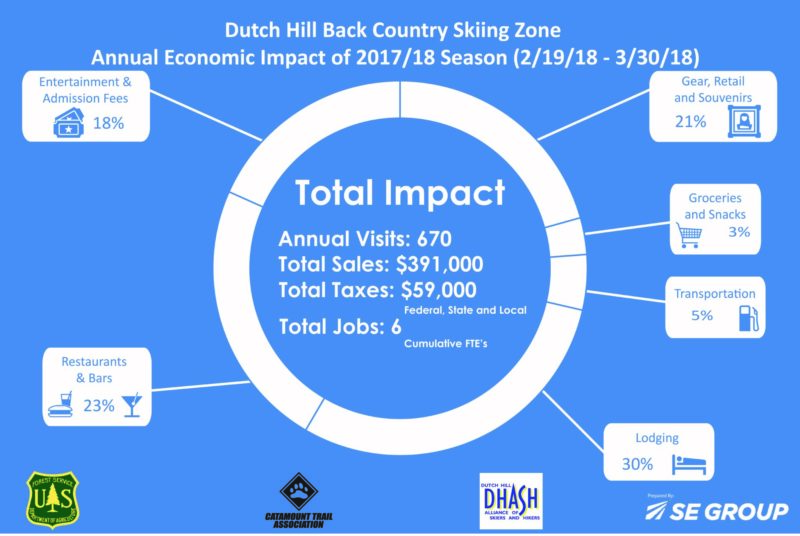
“There’s a good economic reason for us to grow backcountry,” says RASTA president Angus McCusker, who worked with the SE Group on an impact study.
For resorts, the question of how to make backcountry skiing pay is more of a head scratcher. “I’ve had this debate with my dad over and over,” says Adam DesLauriers, whose family founded Bolton Valley Resort on 8,000 acres of timber land his grandfather bought in 1963. Bolton now houses two historic and refurbished backcountry lodges: Bolton Lodge and Bryant Camp.
Adam seems to have made his point. In December 2017 Bolton Valley Resort opened what it has called the “first in-house backcountry-specific guiding and instructional program in North America,” with Dynafit touring gear and Weston Splitboards. This winter, it will host tours there every Sunday for $75 per person, with complete AT or splitboard rental gear for an additional $10. The only other added cost is $10 if you want one lift ride up. Or you can skin up.
Featured Photo Caption: Emily Johnson (near) and Cricket Fellows McCusker (far) ski the glades at Brandon Gap, the first sanctioned backcountry ski terrain on National Forest land in the United States. Photo by Brian Mohr/Ember Photography.

